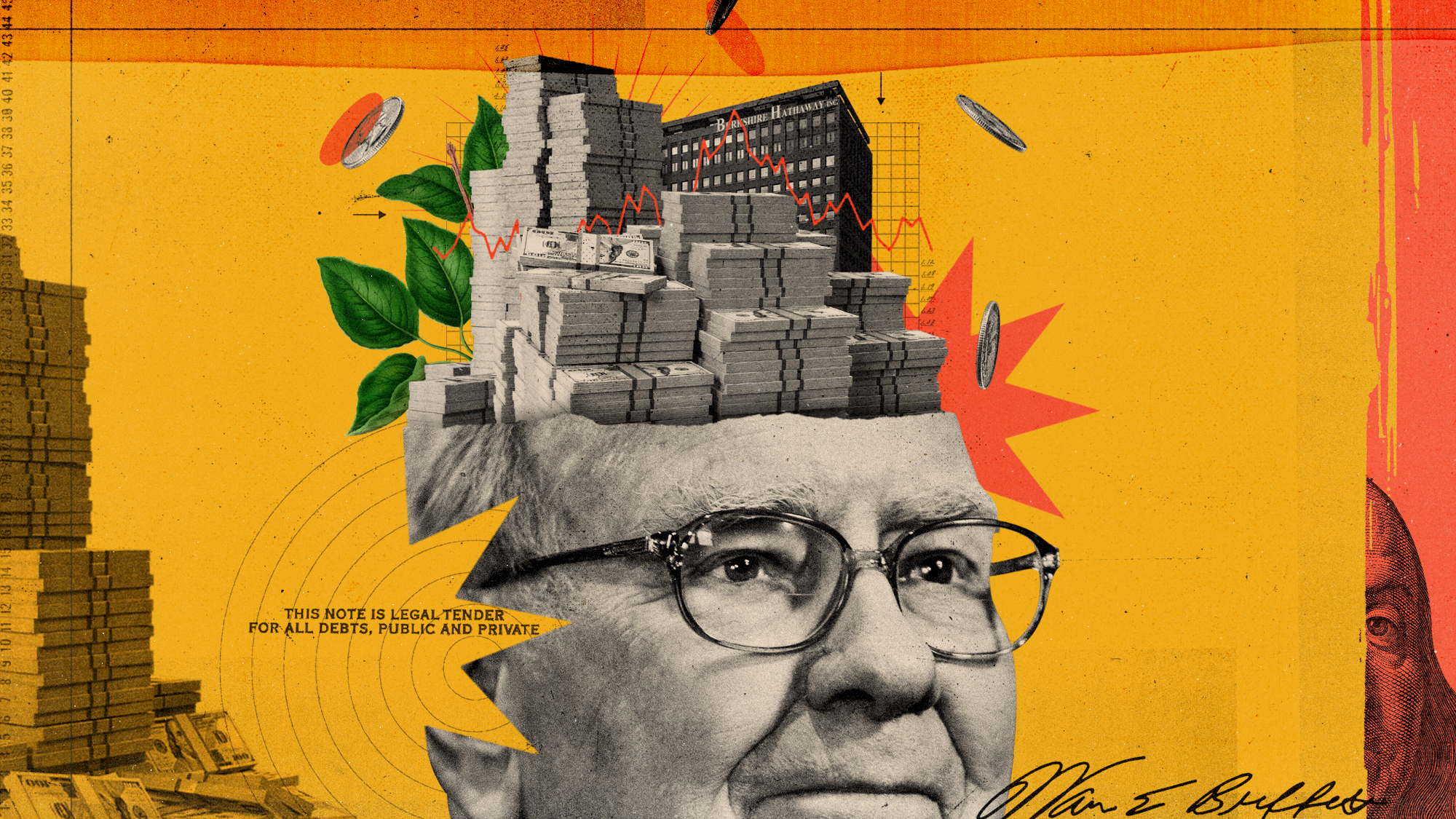Making money: space diamonds and meteorite collecting
‘The Enigma’ black diamond is expected to sell at auction for £5m

Some investments are “quite literally out of this world”, said ITV. Last week at Sotheby’s Dubai, a 555.55 carat black diamond called “The Enigma” was unveiled and it will become the largest faceted diamond of any kind to appear at auction when it goes under the hammer in London next month.
Described as a “treasure from interstellar space”, Sotheby’s expects the black diamond will be sold for at least £5m. And such a high sum means the auction house will accept cryptocurrency as a possible payment.
Only known to exist in Brazil and the Central African Republic, “carbonado” black diamonds date from around 2.6 to 3.8 billion years ago and are an extremely rare natural occurrence. They contain traces of nitrogen and hydrogen abundant in interstellar space, as well as osbornite, a mineral uniquely present in meteors.
The Week
Escape your echo chamber. Get the facts behind the news, plus analysis from multiple perspectives.

Sign up for The Week's Free Newsletters
From our morning news briefing to a weekly Good News Newsletter, get the best of The Week delivered directly to your inbox.
From our morning news briefing to a weekly Good News Newsletter, get the best of The Week delivered directly to your inbox.
The extremely rare diamond will be offered “without reserve” at the dedicated auction, meaning that the winning bid is the highest bid, regardless of its amount or the intrinsic value of the diamond itself.

The Enigma’s mysterious origins
The Enigma, which has 55 facets, is currently the largest cut black diamond in the world, according to Guinness World Records. Its origins are “shrouded in mystery” and it is thought to have been created either from a “meteoric impact or having actually emerged from a diamond-bearing asteroid that collided with Earth”, Sotheby’s explained.
Some experts “remain skeptical of these otherworldly claims”, Smithsonian Magazine reported. “Not so sure it came from outer space,” said Tim McCoy, curator of the meteorite collection at the Smithsonian National Museum of Natural History.
Speaking to NPR’s Debbie Elliot, McCoy added: “I think this is a rock that we can’t quite understand its story yet. But it’s going to be a really good one when someone figures it out.”
A free daily email with the biggest news stories of the day – and the best features from TheWeek.com
Meteorite market is ‘on the rise’
Interstellar items have certainly become big business for auction houses with collectors keen to get their hands on an alternative investment.
In February last year Christie’s held an online-only auction called Deep Impact: Martian Lunar and Other Rare Meteorites. The auction “shattered records” totalling $4,351,750 (£3,227,801) with 100% of the lots sold, LiveAuctioneers.com reported. A record number of bidders participated and 72 of the 75 lots sold for more than their high estimate.
The record-breaking sale “reached a wider audience than ever before for the category”, said James Hyslop, head of science and natural history at Christie’s. “The meteorite market is on the rise.”
Meteorites cut into slices and carved into spheres provided many of the sale’s highlights, Christie’s said. Leading the sale was the fourth largest slice of the Moon cut from the famed Tisserlitine 001 lunar meteorite. Estimated to sell for between $250,000 and $350,000, it surpassed its high estimate and sold for $525,000.
Fall vs. Find
There are only about 60,000 or so documented specimens of meteorites of which only a few hundred originate from the Moon or Mars, Sotheby’s said in its collector’s guide. Of the 60,000, just a third of meteorites are available on the public market – making meteorite collecting a “quite competitive, and lucrative hobby”.
Meteorites can have a commercial value ranging from “a few thousand dollars to a few million”. It all depends on important factors such as weight, provenance, rarity of type, and “Fall vs. Find”.
“A meteorite that can be traced to a documented ‘fall’ – that is, someone witnessed the meteorite shoot through the sky and land on Earth – is more valuable than a ‘find’ – one that is discovered, by chance, thanks to a keen eye,” Sotheby’s explained. “This metric is more important when considering the value of asteroidal meteorites than for Lunar or Martian meteorites, given the rarity of the latter two categories.”
Mike Starling is the former digital features editor at The Week. He started his career in 2001 in Gloucestershire as a sports reporter and sub-editor and has held various roles as a writer and editor at news, travel and B2B publications. He has spoken at a number of sports business conferences and also worked as a consultant creating sports travel content for tourism boards. International experience includes spells living and working in Dubai, UAE; Brisbane, Australia; and Beirut, Lebanon.
-
 ‘If regulators nix the rail merger, supply chain inefficiency will persist’
‘If regulators nix the rail merger, supply chain inefficiency will persist’Instant Opinion Opinion, comment and editorials of the day
-
 Trump HHS slashes advised child vaccinations
Trump HHS slashes advised child vaccinationsSpeed Read In a widely condemned move, the CDC will now recommend that children get vaccinated against 11 communicable diseases, not 17
-
 Hegseth moves to demote Sen. Kelly over video
Hegseth moves to demote Sen. Kelly over videospeed read Retired Navy fighter pilot Mark Kelly appeared in a video reminding military service members that they can ‘refuse illegal orders’
-
 DORKs: The return of 'meme stock' mania
DORKs: The return of 'meme stock' maniaFeature Amateur investors are betting big on struggling brands in hopes of a revival
-
 Why the catastrophe bond market is growing
Why the catastrophe bond market is growingThe Explainer The bonds pay for climate change disaster damages
-
 What will be Warren Buffett's legacy?
What will be Warren Buffett's legacy?Talking Points Observers call him 'the greatest investor of all time.'
-
 Why the ‘energy price cap’ is confusing – and how it could be better communicated
Why the ‘energy price cap’ is confusing – and how it could be better communicatedfeature Government assumptions over public’s energy illiteracy doing more harm than good
-
 Tory leadership election: why tax cuts are an economic gamble
Tory leadership election: why tax cuts are an economic gamblefeature The candidates regard tax cuts as the road to redemption, only differing on the details of how much and how soon
-
 Why are wages not keeping up with inflation?
Why are wages not keeping up with inflation?feature Real wages sank after the global financial crisis and only returned to pre-2008 levels very recently
-
 How do bank holidays affect the economy?
How do bank holidays affect the economy?feature Millions are about to enjoy a four-day weekend thanks to the Queen’s Platinum Jubilee
-
 What Scotland can learn from Irish independence
What Scotland can learn from Irish independencefeature Economists predict Scottish transition would fail to curb increasing interest rates and inequality